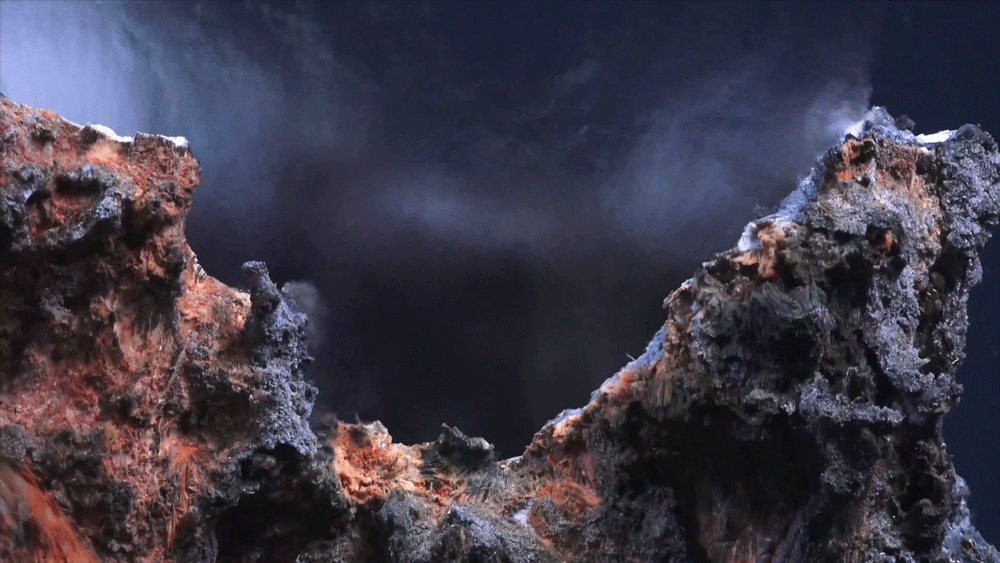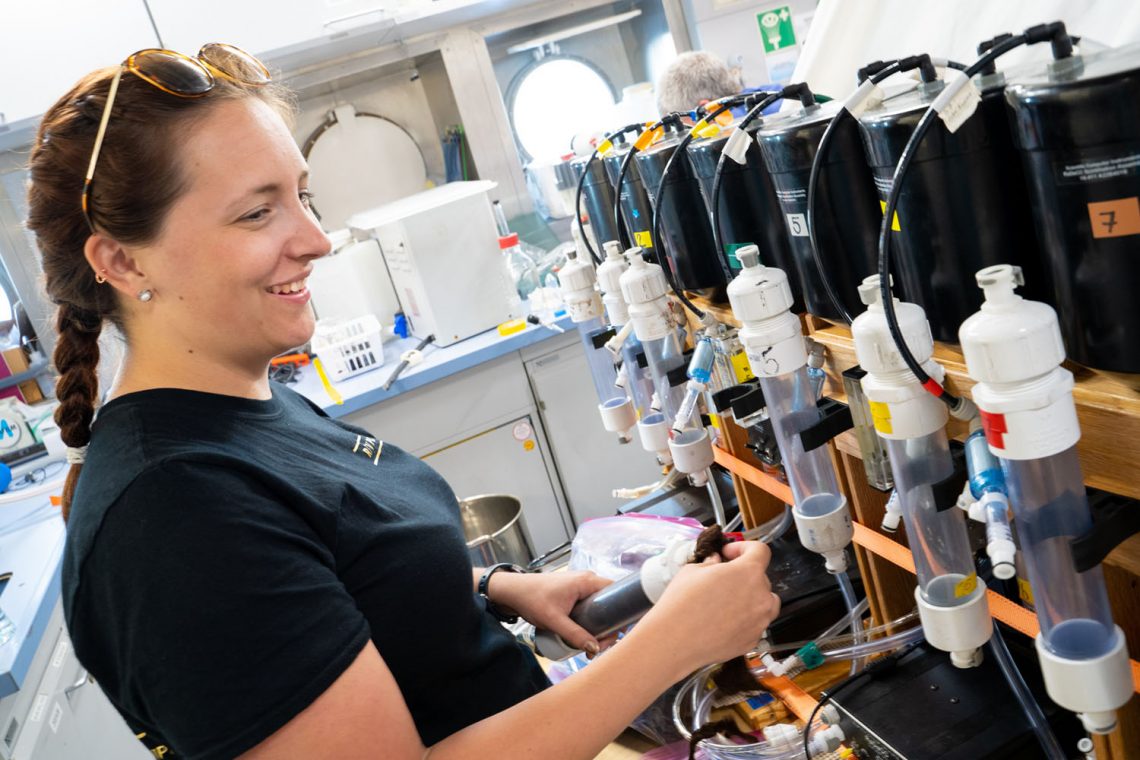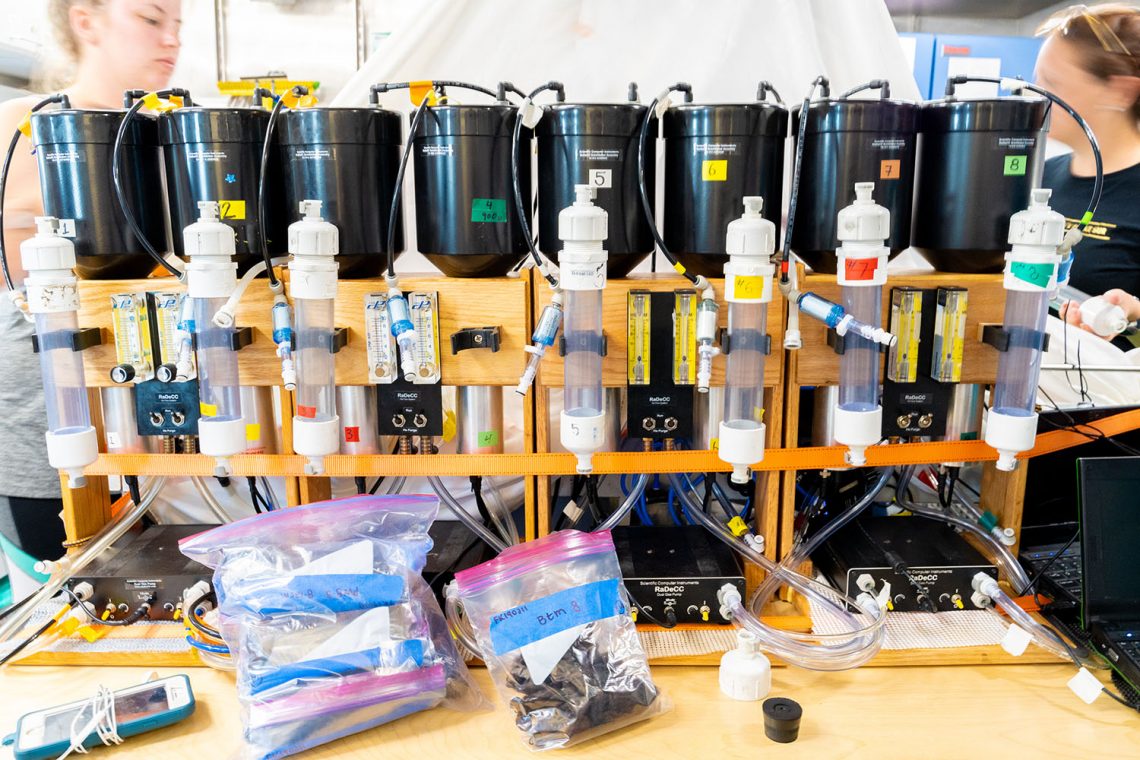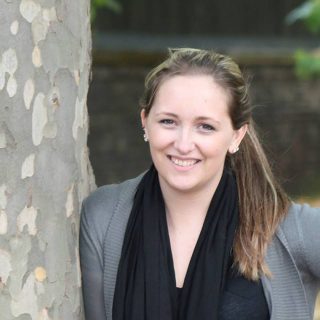Hello everyone! My name is Charlotte Kollman and I am a graduate student in the Groundwater Discharge Measurement Facility at Coastal Carolina University. I am currently aboard the R/V Falkor in the Gulf of California with scientists from several different institutions, all with the shared goal of exploring the biological mysteries that abound here.
The Gulf of California is characterized by massive hydrothermal vents that explode out of the seafloor with hot, nutrient rich water. As vent water escapes, it rapidly cools and rises in the water column, carrying with it essential nutrients that support extreme biological diversity in these areas. Currents then pull the nutrient-rich water (called a plume) and mix it with the surrounding ocean water. Addressing the flow dynamics of the plume and thinking about how biological communities interact with vent fluid is just one piece of the “microbial mysteries” puzzle this cruise seeks to understand.

Understanding Isotopes
My lab, directed by Dr. Rick Peterson, studies radium isotopes and how we can use those isotopes to gain a better understanding of the diverse natural processes happening in the world’s marine systems, such as those near hydrothermal vents. Measuring the radium in the plume and connecting it to sediment studies done on past cruises helps us understand how benthic ecosystems – or living communities on the seafloor – process biological effluents, and how unprocessed effluent may support microbial populations in the surrounding water column.
Many scientists use radioisotopes of elements to study rates and time scales because of a unique property these elements all possess called radioactive decay. We can use the time scales of radioactive decay to study fluid flow rates due to an isotope’s half-life: the amount of time it takes for exactly one half of a particular isotope to decay. There are four naturally occurring isotopes of the element radium, and due to their varying half-lives, each one tells us a different story about the geochemistry of the water and sediment in the ocean.

Tracking Time
Radium-224 has a half-life of just 3.6 days and is a great tool for studying marine processes at the source. We do these calculations on an instrument called a RaDeCC, or Radium Delayed Coincidence Counter, which counts the amount of radium in the water through a radon proxy. Each scintillation cell above the RaDeCC counts radon alpha decay via a photomultiplier, which we can then use to calculate the amount of radium in the sample. The longer lived isotopes of radium can also be studied back in the lab, either on our RaDeCC, a radon-line, or a gamma spectrometer. By combining our measurements at sea with the ones at home in the lab, we can also get a sense of the specific flow dynamics of the plume, such as how long it takes for the source water to travel away from the vent. This is an important piece of of the puzzle because understanding flow dynamics of the plume will allow us to understand the distribution of the other nutrients and chemicals disseminating into our world’s oceans and atmosphere, such as carbon dioxide, iron, and sulfur.

I look forward to the wealth of knowledge that will come out of this cruise, and I’m grateful to be a part of this team. The Gulf of California is still really the wild west in terms of exploration – so much about the biological and geochemical diversity here is just waiting to be discovered. Organisms in these deep sea basins are not just surviving, they are thriving, and it is amazing to have the chance to help contribute to the science that may shed light on how that is possible. Everyone on board – from the science party to the ROV team to the crew – is absolutely great. This should be an incredible experience, and I can not wait to get started!


